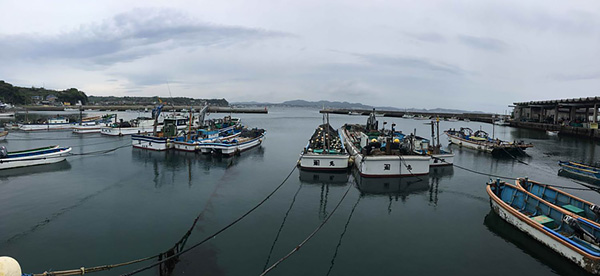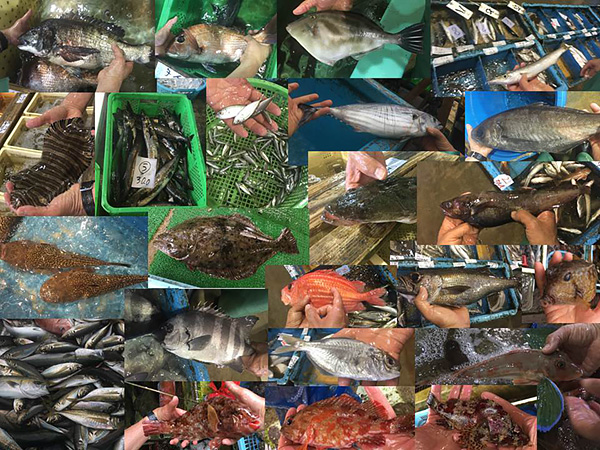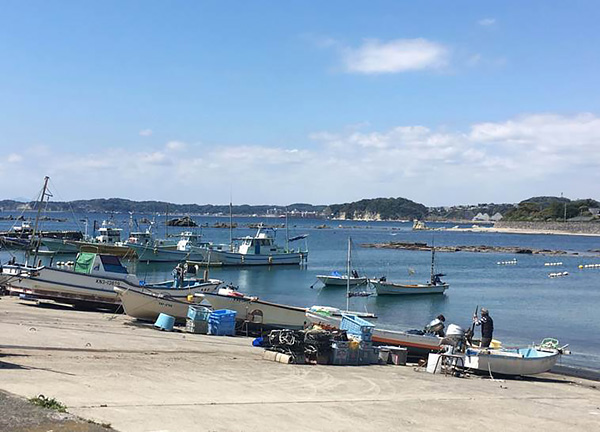Ocean Newsletter
No.454 July 5, 2019
-
It’s a Matter of Perspective: Culture and Ocean Policy
Siri HAKALA
NOAA Fisheries
While the U.S. and Japan are alike in making prodigious efforts for sustainable fisheries, they differ in their actual fishing practices and in the approaches and tools they use for fisheries management. They also share a commitment to making the best decisions possible to protect their resources and peoples, though differences in cultural and ocean policy perspectives persist. Continued efforts towards mutual understanding of each other’s culture and ocean policies, along with exchange programs to foster this, are needed to maintain sustainable fisheries into the future.
-
On Management of Shipping Lanes in the Straits of Malacca and Singapore
Seiji SASAKI
Technical Advisor, Malacca Strait Council / Recipient, 11th National Maritime AwardAs an island state, Japan’s economic activities depend on maritime transport. One of the most important shipping routes is through the Straits of Malacca and Singapore. A half-century has now passed since Japan began undertaking activities for safety of navigation in the Strait. As sovereignty over this ocean space resides in the coastal States and bad feelings can linger between States over territorial issues, it is unprecedented for an outside country to become so deeply involved in the area over such a long period of time. National bodies, courts, and treaty organizations need to interpret and apply the Convention on the Law of the Sea in a comprehensive and forward-looking fashion. -
Navy Cuisine and Town Revitalization
Naofumi TAKAMORI
Retired Captain, Japan Maritime Self-Defense Force / Researcher in Naval History and CuisineTown revitalization is born from an idea and the passion of local residents. “Japanese naval ship cuisine” first appeared in two cities with long ties to the Japanese Navy. I would like here to report on efforts made by the cities of Maizuru and Kure, famous as tourist destinations, and the present status of the ever-increasing boom in Japanese naval ship cuisine. I believe that it is my duty to pass on knowledge about genuine naval food culture to the next generation.
It’s a Matter of Perspective: Culture and Ocean Policy
Valuable experiences in Japan
I was sitting across from a respected colleague one evening, after work hours, in a small izakaya in Tokyo. We were discussing fisheries policy, and as I was trying to understand a particular issue, I suggested a solution which seemed perfectly reasonable to me. But my colleague looked directly at me, smiled, and said, “That …is a very American suggestion.”
And in that moment, I felt the ground shift, my perspective widened, and I had to face the fact that I was indeed looking at the problem through a very American lens. It’s always a little destabilizing when you realize that your world view isn’t quite as worldly as you thought. But destabilizing in a good way. And that conversation came to represent the theme of the year I was spending in Japan.
I am a biologist working for the US National Marine Fisheries Service, part of NOAA (National Oceanic and Atmospheric Administration). I was spending a year in Japan as a Mansfield Fellow. Each year, the Mike Mansfield Fellowship Program sends 10 US federal employees to live and work in Japan, with the intent of promoting greater understanding and collaboration between the federal employees of the United States and Japan. I hoped to gain a better understanding of Japan’s approach to fisheries science and management, to understand how government agencies communicate with their stakeholders and vice versa, and to create and strengthen relationships with Japanese fisheries scientists and managers.

Techiami (set-net) boats in Kaneda (S. Hakala)
I benefitted from exposure to different levels of government by being able to work at the national level with the office of Diet member Kikawada-sensei, with Fisheries Agency Japan (FAJ), with the Japan Fisheries Research and Education Agency (FRA), and also at a more local level with the Kanagawa Prefectural Fisheries Technology Center. I also spent time with JF Zengyoren, the Ministry of the Environment, and with universities and non-governmental organizations. I had a wide breadth of experiences, from attending Liberal Democratic Party budget meetings, to speaking with fishermen from local fishery cooperatives.
As I tried to unravel the similarities and differences between the American and Japanese approaches to fisheries science and management, I tried to keep in mind that my view of any given situation was only from one vantage point, and that there were others.

Some of the many species of fish being sold at the Misaki fish market in Miura. (Special thanks to Nakamura Ryousei-san, of the Kanagawa Prefectural Fisheries Technology Center)
Existence of differing perspectives
Both the US and Japan are striving to maintain sustainable fisheries, but our fisheries differ, as do the processes and tools used to manage those fisheries. Japan excels at promoting and protecting the livelihoods of fishermen, particularly those of coastal fishermen. These small-scale fisheries are managed at the local level, with community-based fishery cooperatives creating most of the management measures. The US, by comparison, has more fisheries that target specific species, and management of all federal fisheries is highly regulated through implementation of the Magnuson-Stevens Fishery Conservation and Management Act (also called the Magnuson-Stevens Act, or MSA).
The nuances, culture, ecology, and history that separate Japan’s and the US’s approaches to fisheries management could be (and have been) written about at length, but what I’m best qualified to address, is the role that science plays in fisheries management. With the current set of fishery reforms, it appears that Japan’s approach to both fisheries management and science, and science’s place within management, is changing, but I’ve tried to capture a few observations that stood out.

Boats in the Hayamamachi Fishery Cooperative Association. (S. Hakala)
From the legislative foundation to the types of science conducted, the primary focus for domestic Japanese fisheries seems to be to create a stable, secure livelihood for fishermen and their communities. There is a lot of science, both at the prefectural and federal level, dedicated to helping fishermen get the most value for their effort (so much so, that I suspect American fishermen would be jealous).
Japan’s Fisheries Research and Education Agency (FRA) has labs throughout the country focused on fisheries management, life history, bioinformatics, genomics, disease prevention, oceanography, ecology, aquaculture, fisheries engineering, food technology, social science, economics, and education. Additionally, the coastal prefectures (most of them) are supported by prefectural fisheries science and technology centers. The questions driving much of the science seem to be how best to support fishermen (and women) in catching fish, predict future stock levels, increase the monetary value of fishery products, and ensure the sustainability of the fisheries.
Approach to fisheries management in the U.S.
The US is also concerned with ensuring a stable livelihood for our fishermen, but much of the science and management efforts are dictated by legislation that takes a longer view on fisheries’ productivity. The Magnuson-Stevens Act (MSA) is the primary law governing marine fisheries management in U.S. federal waters. The key objectives of the MSA are to prevent overfishing, rebuild overfished stocks, increase long-term economic and social benefits, and ensure a safe and sustainable supply of seafood※1. The fact that the first two key objectives are focused less on the livelihoods of fishermen, but more on the health and sustainability of the fish stocks, helps explain a difference in vantage point between our two countries.
In the US, the role that science plays in fisheries management is codified in law. All US commercially fished stocks are required to have fishery management plans that comply with 10 national standards. National Standard 2 establishes that “conservation and management measures shall be based upon the best possible scientific information available.” Catch limits are informed by science provided by NOAA Fisheries and partners, and then set by the Regional Fisheries Management Councils. NOAA Fisheries’ primary fisheries science focus is to conduct the stock assessments or, resource abundance estimates (hereafter referred to simply as “assessments”), needed for the management of commercial fisheries. NOAA Fisheries conducts an average of 200 assessments per year on a rotating 5-year schedule to cover 474 stocks※2. This information feeds directly into fishery management, and, as dictated by the MSA, informs an upper boundary (overfishing limit) when the Regional Fishery Management Councils set the catch limits.
Approach to fisheries management in Japan
By contrast, Japan currently conducts assessments annually for about 84 stocks. Due to the new fisheries reform legislation, this number will be increasing in the near future.
The assessments of stock abundance, and trends evident in these assessments, are helpful for setting management measures, but also for evaluating the success of these measures. Furthermore, there is increasing interest from international markets to demonstrate the sustainability of a given fishery. Not having historic data on stock size may make it difficult for fishermen to convince international markets that their fishing methods are sustainable.
In addition to the focus of the science and number of assessments conducted, it was informative to look at the flow of data into decision making.
Once stock abundance data are collected by Japanese scientists, there is a period of time for exchanging opinions with fishermen. The initial stock assessment goes into internal review with government and university scientists; and then the assessment is published on the Fisheries Agency website and public comments are accepted. Finally, the Fisheries Agency will provide an official notice of a stock assessment. After that, there may be a several-month-long process of setting the catch limit which will start with briefing sessions for fishermen, an opinion exchange meeting, and finally a Fishery Policy Council meeting where the final catch limit is set.
In the US, new approaches to abundance assessments go through a rigorous peer review process, and public opinion is sought on management decisions, but opinions from stakeholders usually don’t enter the picture until the science has been handed off to the managers. There is a distinct effort made to divide the managers from the scientists, to make sure that the science isn’t influenced by management needs.
And finally, when an assessment is complete, there will always be a certain amount of scientific uncertainty based on the amount and quality of the data. Is the stock being fished at capacity? Or could it be fished a little bit more? In Japan, the well-being of fishermen and their families and communities seems to be the most important consideration, and so there is pressure to not limit fishing unless there is irrefutable evidence of the need to do so. But given similar scientific uncertainty, the United States would make the federally-mandated decision to limit fishing, to make sure that a stock that might be under too much pressure is protected.
Towards sustainable fisheries
※2Status of Stocks 2017: Annual Report to Congress on the Status of US Fisheries
